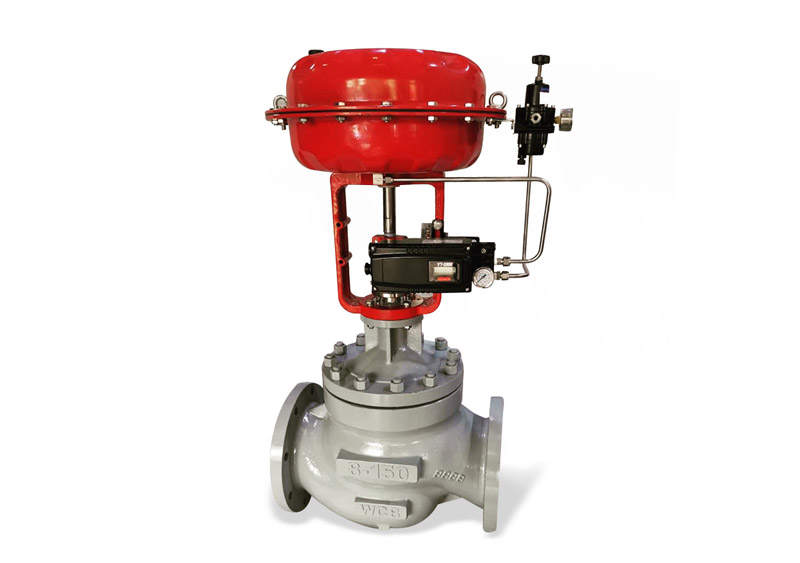Reliable Control Valves: Trick Components for Reliable System Administration
Reliable Control Valves: Trick Components for Reliable System Administration
Blog Article

Maximize Energy Financial Savings and Convenience With Advanced Building Automation Controls
In the realm of contemporary style and center administration, the assimilation of sophisticated structure automation manages stands as a pivotal innovation. The convergence of modern technology and sustainability has actually birthed a new period where energy performance, convenience optimization, and operational streamlining are no more remote ambitions but attainable facts. By harnessing the power of automation, structures can adjust, respond, and develop in ways that were as soon as unimaginable. The potential for considerable power financial savings and boosted convenience is not just a possibility but a guarantee waiting to be fulfilled. This paradigm change in building management holds the crucial to unlocking a world where ecological conscientiousness and resident health harmoniously coexist within the wall surfaces of our frameworks.
Energy Efficiency Benefits
Power performance advantages can significantly lower energy intake and functional expenses in buildings. Energy-efficient systems, such as advanced structure automation controls, can maximize the use of resources like cooling, lighting, and heating, leading to lower energy costs over time.
In addition, improved energy efficiency can extend the life-span of structure devices and systems. By operating much more efficiently, cooling and heating systems, lighting components, and various other building elements experience less deterioration, causing decreased upkeep and substitute expenses. Furthermore, energy-efficient buildings usually command higher home worths and rental rates, giving long-lasting financial advantages to owners.
In addition, energy efficiency can enhance occupant convenience and productivity. Correctly controlled interior settings with ideal lighting and thermal conditions produce an even more pleasurable and favorable work space, bring about improved worker satisfaction and performance. On the whole, the energy effectiveness advantages associated with sophisticated structure automation controls are multifaceted, including cost financial savings, environmental stewardship, and occupant well-being.
Boosted Comfort Control
Enhancing comfort control in building atmospheres requires an innovative combination of innovative automation systems for ideal passenger health. By making use of advanced structure automation controls, centers can tailor the indoor environment to satisfy the details requirements and choices of occupants. These systems allow specific guideline of ventilation, temperature level, and illumination, creating a efficient and comfortable environment. Owner contentment and efficiency are closely connected to thermal convenience, making it important to have systems in place that can adapt to changing conditions in real-time.
Boosted comfort control surpasses basic temperature adjustments. It consists of functions such as customized settings, occupancy sensing units, and natural light utilization to produce a receptive and dynamic setting. By including these innovative controls, structures can not just improve convenience but also boost energy efficiency by maximizing system operations based on actual occupancy and usage patterns. Eventually, prioritizing resident comfort via innovative automation systems brings about an extra enjoyable and much healthier interior setting.
Functional Efficiency Improvements

In addition, the application of real-time surveillance and analytics tools makes it possible for building operators to determine power ineffectiveness and functional anomalies quickly. By continually keeping track of power use patterns and system performance metrics, modifications can be made in real-time to maximize energy usage and make sure peak functional efficiency. control valves. In addition, including demand action approaches right into building automation controls can even more boost functional efficiency by dynamically changing power use based on grid conditions and rates signals
Indoor Environment Optimization
Efficient indoor climate optimization is an essential element of building automation controls, making certain occupants' comfort and well-being while making best use of power savings. By utilizing advanced sensors and controls, building automation systems can continuously change and keep an eye on temperature, humidity levels, air high quality, and ventilation to produce an optimum interior environment. Keeping consistent and comfortable conditions not only enhances owner satisfaction yet likewise boosts efficiency and overall well-being.
Indoor environment optimization additionally plays a critical role in energy click to read more efficiency. By fine-tuning cooling, ventilation, and home heating systems based on real-time data and tenancy patterns, developing automation controls can substantially decrease energy intake - control valves. For circumstances, carrying out methods such as demand-controlled air flow and thermal zoning can assist minimize power waste while ensuring that each location of the structure receives the required conditioning.

Lasting Atmosphere Development
Building automation manages not just optimize indoor climate conditions for power performance and passenger convenience but likewise lay the structure for creating a sustainable setting via tactical administration of resources and systems. By integrating sophisticated structure automation technologies, such as sensors, actuators, and intelligent software application, facilities can readjust and keep track of energy usage in real-time to decrease waste and lower their carbon impact. These systems enable anticipating upkeep, identifying possible problems before they rise and enhancing devices performance to boost longevity and performance.
In addition, sustainable setting development expands beyond power administration to encompass water preservation, waste decrease, and indoor air top quality enhancement. Structure automation controls can regulate water usage, discover leaks, and ensure proper garbage disposal techniques, adding to general sustainability efforts. Furthermore, by controlling and checking ventilation and filtering systems, these modern technologies improve owner health and efficiency while decreasing energy intake connected with heating and helpful hints cooling procedures.
Conclusion
In verdict, progressed building automation manages offer considerable advantages in terms of power savings, comfort control, functional effectiveness, indoor environment optimization, and developing a sustainable setting. By carrying out these controls, buildings can attain ideal performance while decreasing energy intake and enhancing owner comfort. It is obvious that using advanced automation modern technology is important in boosting structure performance and creating a much more lasting future.
Power efficiency benefits can dramatically reduce energy usage and functional costs in structures. Generally, the energy performance advantages associated with sophisticated building automation controls are multifaceted, encompassing cost savings, ecological stewardship, and owner health.
Additionally, incorporating need feedback methods into building automation controls can better improve operational efficiency by dynamically readjusting power usage based on grid conditions and rates signals.
Structure automation regulates not just maximize indoor climate conditions for energy efficiency and owner convenience yet additionally lay the foundation for creating a sustainable environment through strategic monitoring of systems and sources.In final thought, advanced structure automation controls deal significant advantages in terms of energy financial savings, convenience control, operational performance, interior climate optimization, and creating a lasting atmosphere.
Report this page